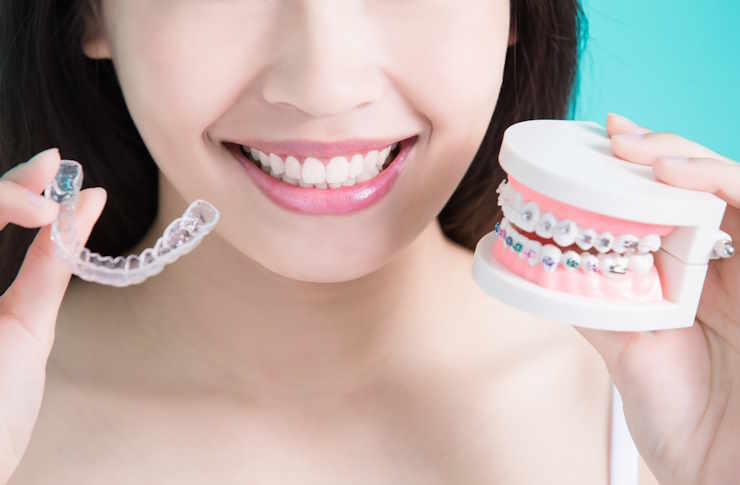Invisible Dentures Explained: Typical Costs and Features
Invisible dentures offer a discreet, natural look while restoring comfort and function. Understanding material types, cost factors, and fitting processes helps all patients explore realistic options for lasting comfort and long-term dental confidence.

Invisible dentures represent a significant advancement in restorative dentistry, providing patients with a natural-looking alternative to traditional dentures. Unlike conventional options that may feature visible metal clasps or bulky acrylic bases, invisible dentures utilize advanced materials and design techniques to create prosthetics that blend seamlessly with existing teeth and gums. These devices are engineered to restore both function and appearance, allowing wearers to speak, eat, and smile with confidence. The growing popularity of invisible dentures stems from their ability to address common concerns about aesthetics while maintaining the durability and comfort necessary for daily wear.
Invisible Denture Materials and Design
The construction of invisible dentures relies on specialized materials that prioritize both aesthetics and strength. High-quality thermoplastic resins, such as nylon-based polymers, form the foundation of many invisible denture designs. These materials offer flexibility, resistance to staining, and a translucent quality that mimics natural gum tissue. Unlike rigid acrylic, flexible denture materials conform more closely to the contours of the mouth, reducing irritation and improving retention without metal clasps. The tooth components typically consist of composite resins or porcelain designed to match the shade and translucency of natural enamel. Advanced CAD/CAM technology enables precise customization, ensuring each denture fits the unique anatomy of the wearer’s mouth. The absence of visible metal hardware distinguishes invisible dentures from traditional partial dentures, making them virtually undetectable during normal conversation and social interaction.
Cost Factors and Durability Insights
Several variables influence the overall investment required for invisible dentures. Material quality plays a primary role, with premium thermoplastic resins and custom-fabricated teeth commanding higher prices than standard options. Geographic location affects costs significantly, as dental services in urban areas or regions with higher living expenses typically charge more than rural practices. The complexity of the case, including the number of teeth being replaced and the need for preparatory procedures such as extractions or gum treatment, adds to the total expense. Laboratory fees for custom fabrication and the dentist’s expertise level also contribute to price variations. Durability depends on material quality, proper maintenance, and wear patterns. High-quality invisible dentures can last between three to five years with appropriate care, though some patients may require adjustments or replacements sooner due to changes in jaw structure or gum tissue. Regular cleaning, avoiding extremely hard foods, and periodic professional evaluations help extend the lifespan of these prosthetics.
| Provider Type | Service Offered | Estimated Cost Range |
|---|---|---|
| Private Dental Practice | Custom invisible partial dentures | $1,000 - $3,500 per arch |
| Prosthodontist Specialist | Premium flexible dentures with advanced materials | $2,500 - $5,000 per arch |
| Dental School Clinic | Student-supervised invisible denture fabrication | $500 - $1,500 per arch |
| Dental Chain Clinic | Standard flexible dentures | $800 - $2,200 per arch |
| Online Denture Services | Mail-order impression kit and fabrication | $600 - $1,800 per arch |
Prices, rates, or cost estimates mentioned in this article are based on the latest available information but may change over time. Independent research is advised before making financial decisions.
Comfort Fit and Natural Appearance Considerations
The comfort level of invisible dentures stems from their lightweight construction and flexible properties. Traditional dentures often create pressure points or cause sore spots due to rigid materials and metal clasps. Invisible dentures distribute pressure more evenly across the gum tissue, reducing discomfort during extended wear. The flexibility of thermoplastic materials allows the denture to move slightly with natural mouth movements, creating a more organic feel. Retention mechanisms rely on the material’s ability to grip the natural teeth and gums without metal attachments, though some designs incorporate tooth-colored clasps for added stability. Natural appearance depends on precise color matching and proper tooth positioning. Skilled dental technicians select artificial teeth that complement the patient’s facial features, skin tone, and remaining natural teeth. The translucent quality of modern denture bases allows underlying gum color to show through subtly, eliminating the artificial appearance associated with opaque acrylic. Proper border extension and contouring ensure the denture blends seamlessly with surrounding tissues, making it difficult for observers to detect the prosthetic.
Maintenance and Long-Term Care Requirements
Proper maintenance extends the functional life of invisible dentures and preserves their aesthetic qualities. Daily cleaning with non-abrasive denture cleansers removes food particles and prevents bacterial buildup without damaging the flexible material. Harsh toothpastes and stiff-bristled brushes should be avoided, as they can scratch the surface and diminish translucency. Soaking dentures overnight in denture-specific cleaning solutions helps maintain hygiene and material integrity. Regular dental checkups allow professionals to assess fit, identify wear patterns, and make necessary adjustments. Over time, bone resorption and tissue changes may require relining or replacement to maintain proper fit and function. Avoiding extremely hot water prevents warping of thermoplastic materials, while careful handling reduces the risk of fractures or tears. Patients should remove dentures during sleep when recommended by their dentist to allow gum tissues to rest and recover.
Comparing Invisible Dentures to Traditional Options
When evaluating invisible dentures against conventional alternatives, several distinctions become apparent. Traditional partial dentures typically incorporate metal frameworks with visible clasps that attach to natural teeth, providing excellent stability but compromising aesthetics. Complete acrylic dentures offer affordability but may appear bulky and artificial. Invisible dentures eliminate visible metal components, creating a more natural appearance suitable for social and professional settings. However, the flexibility that enhances comfort may reduce the biting force compared to rigid dentures, potentially limiting certain food choices. Cost considerations favor traditional dentures for budget-conscious patients, while those prioritizing aesthetics may find the additional investment in invisible options worthwhile. Dental implants represent the premium alternative, offering permanent tooth replacement with superior stability and bone preservation, though at significantly higher costs. The choice between options depends on individual priorities, oral health status, budget constraints, and lifestyle requirements.
Invisible dentures provide a balanced solution for individuals seeking tooth replacement that combines aesthetics, comfort, and functionality. By understanding the materials, costs, and maintenance requirements, patients can make informed decisions aligned with their oral health goals and financial considerations. Consulting with qualified dental professionals ensures proper evaluation and selection of the most appropriate prosthetic option.
This article is for informational purposes only and should not be considered medical advice. Please consult a qualified healthcare professional for personalized guidance and treatment.




